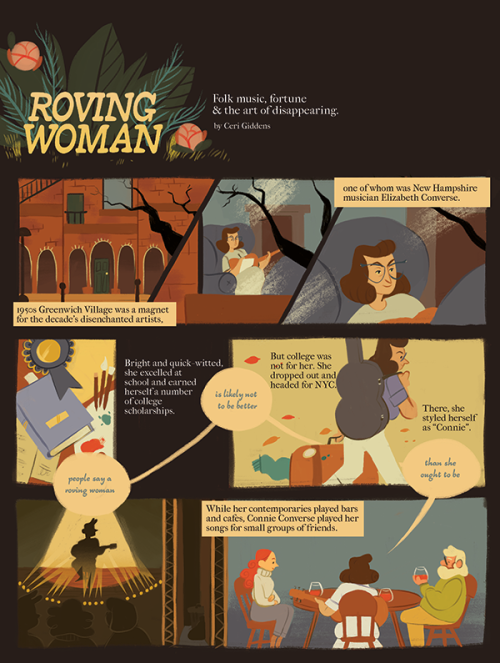#connie converse
here’s the entirety of the wee comic about Connie Converse I did for Critic Te Arohi this year! You can listen to her album How Sad, How Lovely here (and you should, because it’s really good).
(you might need to click through for this to be legible, sorry!)
Post link
hi hi hi here’s a wee comic I did for Critic mag about a cool lady, which you can read here
Post link
A research request today brought us back to a very interesting alumna–Elizabeth “Connie” Converse. Converse entered Mount Holyoke as part of the class of 1946. She studied French and Philosophy. However, in 1946 she decided to leave the college and move to New York City.
There, she began writing folk songs while working as a printer’s assistant. Noted as one of the earliest singer-songwriters, Converse wrote with a style and subject matter seemingly ahead of her time. Her songs are often sad or funny, telling the stories of misfits like a “roving woman” who didn’t mind having different men take her home. Many described her as different from any other person, with a certain air of sadness about her.
Though she met other artists and recorded much of her music, she never decided to hire an agent. In the 60s she left New York to move to Ann Arbor, Michigan, working with the University of Michigan’s journal on conflict resolution. There she also participated in political activism. Her music became more of a casual activity she did with friends.
In 1974, however, something changed. Connie decided to pack up her belongings and leave. She left poetic letters for her family and friends, telling them that she was leaving and was unsure if she would see them again. There is no record or knowledge of her whereabouts since then.
More recently, her music was brought back to the public eye by a New York friend who had recorded her music in the 40s and 50s. Her music can now be found on online streaming services like Spotify and Bandcamp, as part of Squirrel Thing Records, a company named for a line in one of her songs.
This image is from The New Yorker, from the estate of Elizabeth Converse.
Post link







